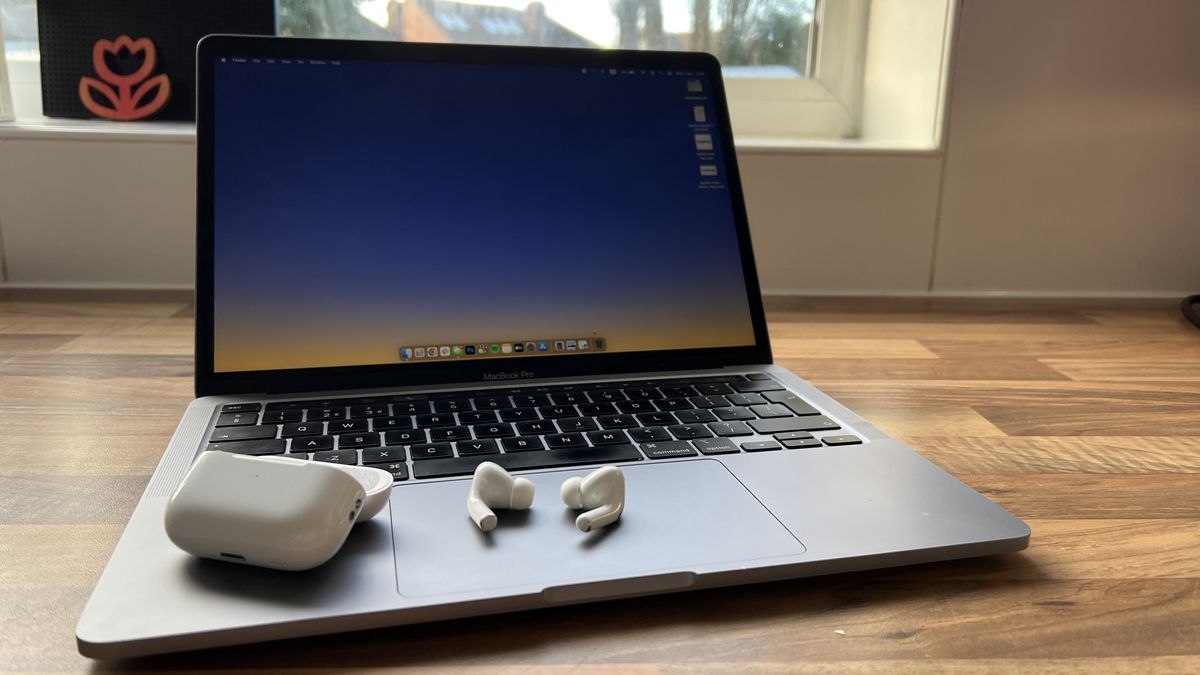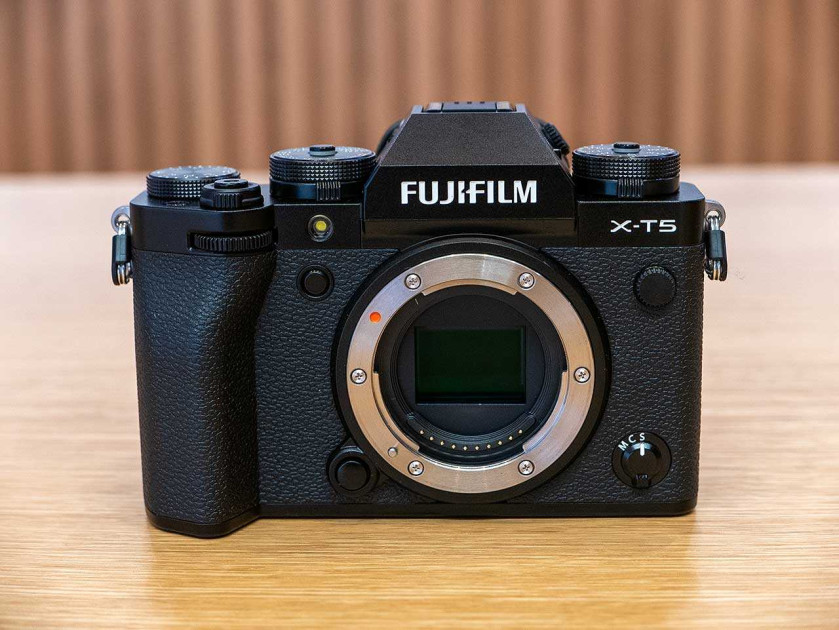
Introduction
The Fujifilm X-T5 is a flagship APS-C sensor mirrorless camera which was released in November 2022. It effectively replaces the two-year-old X-T4 model.
The X-T5 has a 40.2 megapixel, APSC sized, X-Trans CMOS 5 HR back-side illuminated (BSI) sensor and X-Processor 5 image processing engine, and an extended ISO range of 64-51,200.
It is capable of recording 6.2K/30p and DCI 4K video at up to 60p in 4:2:0 8-bit internally and 4:2.2 10-bit externally via HDMI for up to 160 minutes.
The XT5 can shoot blackout-free at 20fps with continuous phase-detect auto-focus and auto-exposure when using the electronic shutter with a 1.29x crop applied and 15fps continuous shooting when using the mechanical shutter.
Other key features include 5-axis in-body image stabilisation (IBIS) which provides up to 7 shutter steps of compensation for stills, a 3.68M-dot OLED electronic viewfinder with 0.75x magnification and 100fps refresh rate, a tilting 3-inch touchscreen LCD with 1.84-million-dot resolution, and dual UHS-II SD memory card slots.
There are 425 AF points with phase detection pixels across the entire frame and the auto-focus algorithm has been improved so that it’s 3x faster and offers better eye/face detection than the X-T4.
The X-T5 can automatically detect animals, birds, cars, bikes, planes and trains thanks to the X-Processor 5’s AI deep learning capabilities.
This is the second ever X-Series camera to feature Pixel Shift Multi-Shot, with the camera automatically combining 20 shots to deliver 160 megapixel images for the ultimate quality when detail really matters.
The XT5 additionally offers an ultra-fast electronic shutter that is capable of exposures up to 1/180000sec, exposure compensation up to ±5 stops, wi-fi and Bluetooth connectivity, 740-shot battery life and USB-C charging, interval timer shooting, in-camera raw conversion, multiple exposure and panoramic shooting modes, and a wide range of filter effects and film simulation modes.
The Fujifilm X-T5 is available in either Black or Silver priced at £1699 / $1799 for the camera body only in the UK and US respectively. The XT5 is designed and manufactured in Japan.
Ease of Use
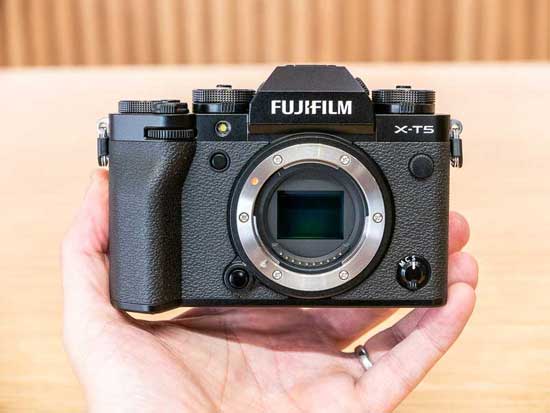 |
The new X-T5 concentrates on delivering sheer resolution and high levels of detail by utilising exactly the same 40-megapixel X-Trans CMOS 5 HR sensor that first made its debut in the Fuji X-series camera range with the recent launch of the X-H2.
This is a BSI (back-side illuminated) sensor design that has much more of a focus on detail and resolution than out-and-out speed, backed up by the inclusion of the special Pixel Shift Multi Shot mode which creates 160 megapixel images.
Previously only seen on the X-H2 and the company’s GFX-branded medium-format cameras, in the Pixel Shift Multi-Shot the camera records 20 frames, shifting the sensor by 0.5 pixels between each frame.
The resulting images are then automatically combined into one DNG RAW file, which can be output to a desired file format using suitable RAW processing software.
The 40 megapixel sensor allows the XT5 to record 6.2K/30p video, but despite using the same sensor, it surprisingly can’t also match the highest quality 8K/30p mode offered by the X-H2.
If you don’t like the less traditional, less Fuji-like user interface or the rather eye-watering price-tag of the X-H2 but you still want the highest-resolution cropped-sensor camera on the market, the XT5 is the one to spring for.
It is virtually identical to its predecessor, the X-T4, retaining all of the traditional dials and controls that Fuji users have come to know and love, including the classic Fujifilm ISO, Shutter Speed and Exposure Compensation dials on top of the camera.
The XT5 weighs 476g or 557g with a battery fitted, making it 50g lighter than the XT4.
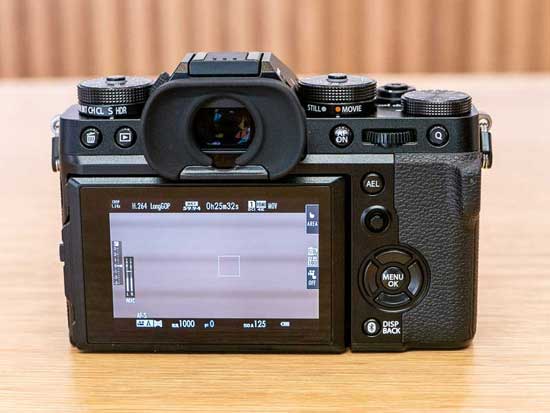 |
Measuring 129.5 x 91x 63.8mm, the new X-T5 is slightly smaller than the X-T4 (which measures 134.6 x 92.8 x 63.8mm) , although not by that much.
It’s actually almost as small and portable as the original X-T1 model, just measuring 16mm deeper because of the IBIS unit and larger capacity battery.
If you’re a long-time user of the XT-series than you won’t notice too much difference between all of the models regards to their in size, weight or control layouts.
The X-T5 has a large, sculpted hand-grip at the front. You can definitely fit three fingers on it, maybe even four depending on your hand size, with your little finger naturally curling underneath the bottom of the body. There’s also a prominent grip on the rear of the camera for your right thumb.
A textured faux-leather surface runs around the full width of the camera, with two metal eyelets on either side of the body used for connecting the supplied shoulder strap.
Fujifilm’s ethos with its flagship X-T cameras has long captured the imagination of ‘purist’ photographers. One of the first things you will notice about the X-T5 is the solid metal top plate adorned with dials to control ISO, shutter speed and exposure compensation.
Add an X-series lens with aperture ring to the equation and you have direct access to the key exposure controls without needing to eye a screen. Once acclimatised to this ‘traditional’ form of operation, it’s hard to go back (or should we say forward) to the ‘modern’ way. For us, this handling approach is refreshing.
But the Fuji XT5 is certainly no dinosaur. with a switch under the shutter speed dial offering a choice between Still and Movie shooting. This is a camera that fully embraces both photography and video.
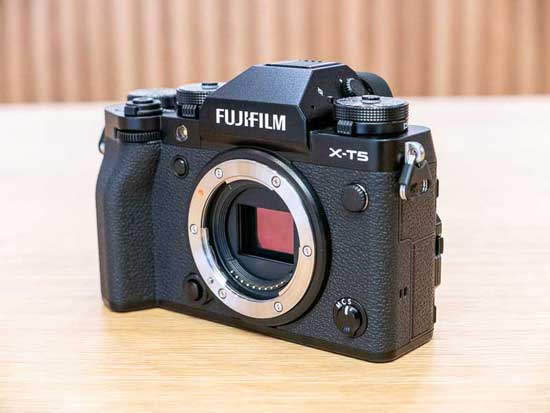 |
The Still/ Movie switch swaps between dedicated in-camera menu systems, so you don’t have to scroll through excessive video options when all you want to do is photography, and vice versa, and the menu system for both disciplines is really well laid out.
Typically, navigating through this many shooting options to the one that you want is painful. Yet, the in-camera video mode menu is broken down logically into three sub groups; resolution, frame rate and bit rate so you can select the combination that you desire.
A nice touch is that the front and rear control wheels can now be used quietly in movie mode to make changes to exposure settings, even during capture. (The top dials are redundant in video mode.) In conjunction with the touchscreen menu, most other key video controls such as white balance and image stabilisation can be adjusted too.
The X-H2 offers a slightly better video mode than the X-T5 and is the one to buy if you’re predominantly a videographer, although this new model certainly gives it a run for its money.
The XH2 offers a highest quality rate of 8K/30p with no crop recorded in 4:2:2 10-bit internally for approximately 160 minutes, whereas the XT5 can’t record at all in 8K, despite using the same sensor, topping out at 6.2K/30p with a modest 1.23x crop recorded in 4:2:2 10-bit internally.
Both cameras support up to DCI 4K/60p recording with no cropping, and both can shoot 1080/240p slow-motion footage. They also offer the new F-Log 2 profile with up to 14+ stops of dynamic range.
Combined with a compatible HDMI recording device from Atomos or Blackmagic Design, 12-bit RAW video output from both cameras can be recorded as Apple ProRes RAW or Blackmagic RAW.
They also feature a digital zoom function that uses the camera’s 40.2MP sensor to deliver up to 2x of digital zoom with little to no loss in resolution, when recording video in 4K.
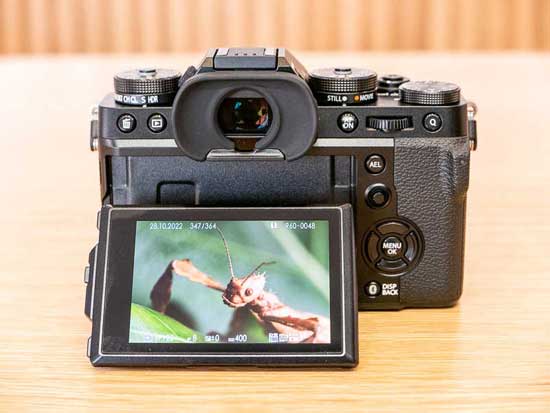 |
The X-H2 has a much larger buffer, though, which increases the maximum available affect bit rate for video in comparison with the X-T5.
Also, you can’t fit an external cooling fan to the XT5, unlike the XH2, and because it’s substantially smaller there is no full size HDMI port or 3.5mm headphone socket on the XT5 either.
The X-T5 offers a slightly different standard sensitivity range of ISO 125 to ISO 12,800 to the X-T4, which can be expanded down to ISO 64 and up to ISO 51,200.
This makes the X-T5 well suited to low-light shooting, allowing you to hand-hold the camera in places where you’d usually be reaching for a tripod or other support.
Fuji’s clever ISO Auto Control setting allows you to set a maximum sensitivity (up to 6400) and a minimum shutter speed (1/30th is a good starting point), with the camera over-riding your ISO choice if it thinks you’re being too ambitious whilst maintaining a shutter speed that won’t introduce camera shake.
The image sensor used in the X-T5 is the next generation 40.2 megapixel, APS-C sized, X-Trans CMOS 5 HR back-side illuminated (BSI) sensor, making its second appearance in the Fuji X-series camera range.
Although it can’t match up to the headline-grabbing 40fps continuous shooting speed offered by the X-H2S and its stacked sensor, the new XT5 is certainly no slouch when it comes to burst sequences.
This new model offers exactly the same burst shooting rates as the X-H2. They can both shoot at 20fps when using the electronic shutter, with a 1.29x crop applied, and both offer the same 15fps continuous shooting speed when using the mechanical shutter.
 |
There is one very important difference between them, though, and that’s the size of the internal buffer.
Whereas the XH2 can record up to 1000+ JPEGs or 400 RAW files at 20fps, the X-T5 can only manage a comparatively meager 119+ JPEGs or 19 RAW files before the continuous shooting rate starts to slow down.
In comparison to its predecessor, the X-T4 was something of a speed demon when it was released in 2020, so much so that it actually still out-performs the new X-T5.
It can shoot at 20fps when using the electronic shutter without any crop, or 30fps with a 1.25x crop applied, whereas the XT5 can only shoot at up to 20fps when using the electronic shutter, and that’s with a 1.29x crop applied.
To help with capturing the precise moment, the X-T5 has a clever Pre-shot burst shooting mode, with the camera constantly filling the buffer while your half-press the shutter button, and then keeping the most recent ones taken 0.5-1 seconds before a full press of the shutter button, eliminating any camera and human-added delay. Note that this feature only works with the electronic shutter.
Thanks to its 40 megapixel sensor, the XT5 offers a greater number of PDAF points (3.3 million) than the XT4. Fujifilm say that the new model isn’t quite as fast at tracking moving subjects as the flagship X-H2S, though, thanks to that camera’s stacked sensor.
The X-T5 actually has two kinds of shutter, mechanical and electronic. When using its mechanical focal-plane shutter, it has a top shutter-speed limit of 1/8000th second in all shooting modes.
There’s no built-in ND filter, so if you want to use a very fast lens in very bright sunlight when using the mechanical shutter, then it’s a good idea to buy an actual glass ND filter.
It considerably improves the fastest shutter speed for the electronic shutter by 2.5 stops, from 1/32000 sec on the previous generation XT4 to a remarkable 1/180,000 sec on the XT5.
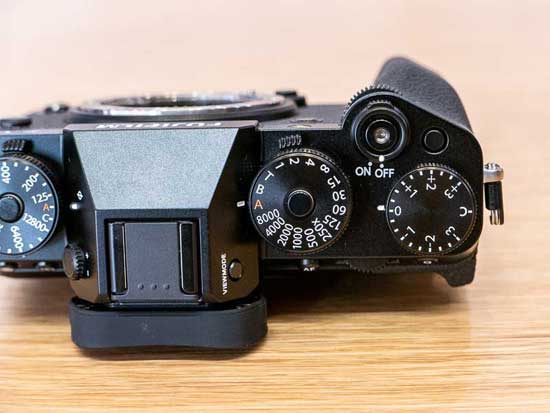 |
This allows users to leave the aperture wide open in very bright conditions such as a sunny beach or a ski slope, or to capture a split-second motion.
This allows you to continue shooting wide-open with fast aperture lenses in the brightest of conditions without having to resort to fitting a glass ND filter or using an external flash and lights.
The X-T5 has a flash-sync speed of 1/250th second with the mechanical shutter and 1/125th second with the electronic shutter.
To make the camera even less obtrusive, when the electronic shutter is selected there’s a Silent menu option which turns off the speaker, flash, AF-assist lamp and most importantly the shutter-release sound, instantly making the X-T5 perfectly suited to more candid photography.
It’s all very well being able to record at 20fps, but unless the camera can quickly, accurately and reliably focus on whatever fast-moving subject you’re trying to capture, it’s all for nothing.
Thankfully, although the new X-T5 has the same hybrid autofocus system with up to 425 selectable phase detection and and contrast detections points as the X-H1, X-T4 and X-Pro3 models, Fujifilm have made a number of really significant improvements to make it their best AF system yet.
Chief amongst these is the inclusion of subject-based computational AI, with the XT5 being able to automatically detect animals, birds, automobiles, motorcycles and bikes, airplanes and train.
You do have to specifically choose which of those you want to track from the Subject Detection Setting menu, but you can easily register different settings to the camera’s various custom modes.
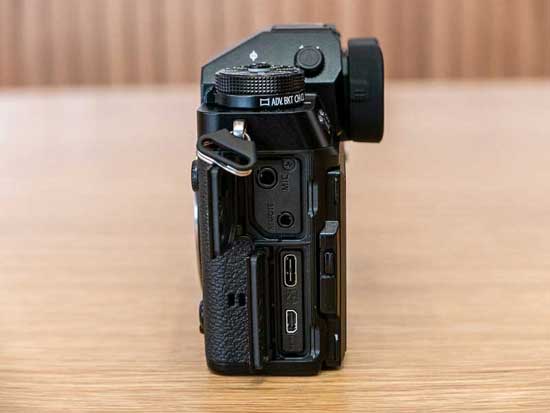 |
Turning this feature on resulted in a super-high hit rate in terms of auto-focusing, with the camera often able to focus on the subject before we’d even spotted it ourselves.
The improved auto-focus algorithm that’s claimed to be 3x faster than the X-T4 and particularly the subject detection modes help to ensure that the vast majority of your images are sharp.
The XT5 is the sixth Fujifilm camera to feature 5-axis in-body image stabilisation (IBIS), following on from the X-H1, X-H2, X-H2S, X-T4 and the X-S10.
The X-T4 provides up to 6.5 shutter steps of compensation for stills, whereas the X-T5 provides up to a maximum of 7 stops, half a stop better and the joint-best of any current Fujifilm camera with the X-H2 and X-H2S.
The XT5 has the same very good 3.68M-dot OLED electronic viewfinder, 100fps refresh rate and a built-in eye sensor as the X-T4, but the EVF on the XT5 offers slightly higher magnification (0.80x vs 0.75x).
The even better OLED electronic viewfinder on the X-H2 has greater 5.76M-dot resolution, larger 0.80x magnification and a faster 120fps refresh rate.
One of the biggest differences between the new X-T5 and the X-T4 and X-H2 cameras is the action of the LCD screen.
Fujifilm have gone back to a 3-way tilting LCD on the XT5, rather than the vari-angle screen on the XT4 and XH2, saying that it better matches the more stills-focused nature of the newer model.
 |
The resolution of the screen has been increased slightly from 1.62M-dots to 1.84M-dots, actually making it the highest-res screen of any current Fujifilm APS-C camera.
The X-T5 features both built-in wi-fi and Bluetooth connectivity. The latter option creates a constant, low-power connection between the camera and a smartphone/tablet to transfer images and video using the Fujifilm Camera Remote smartphone app, while the former allows you to remotely control the X-T5 via either a 2.4Ghz or 5GHz wi-fi connection using a smartphone or tablet and the Fujifilm app, and transfer images and video from one device to the other.
The X-T5 has dual memory card slots, just the X-T4, and just like the X-T4 it has two UHS-II SD card slots, rather than one UHS-II SD slot and one CFexpress Type B slot as seen on the recent X-H2S and X-H2 cameras.
Despite the X-T5 using exactly the same NP-W235 batteries as the X-T4, Fujifilm are claiming that it offers 740 shot battery life in economy mode, which is actually 20% better than the XT4.
Both cameras can also be powered and charged via a USB-C connection, which is useful if you’re out and about and have a compatible power-bank to plug the camera into.
Perhaps somewhat controversially, the new X-T5 does not support a vertical battery grip (there are no contacts on the bottom of the camera).
Fujifilm say this is based on market data for the X-T4 which showed that the majority of owners did not buy one.
Instead you can purchase the optional MHG-XT5 metal hand grip if you feel than the body on its own is too small.
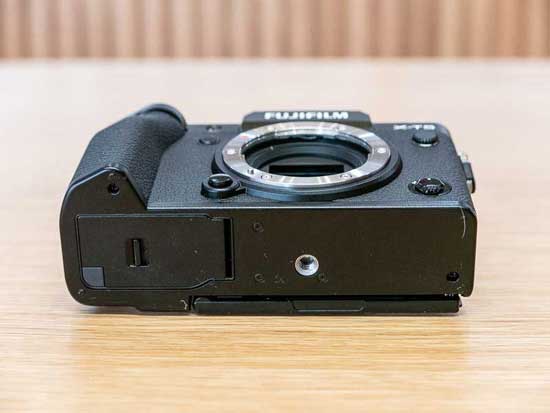 |
Note that there is a Vertical Battery Grip (VBG-XH) available for the X-H2 model which accepts two NP-W235 rechargeable lithium-ion batteries to extend the life for up to 1700 frames between recharges.
The previous X-T4 also supports a vertical battery grip, which as well as making handling easier in portrait mode, again greatly increases the available battery life.
A metal tripod mount is positioned inline with the centre of the lens and far away from the battery/memory card compartment, so you don’t have to remove the camera from the tripod to change the battery.
The new Fujifilm X-T5 retains the classic retro styling and control layout of its predecessor but uses the same 5th generation sensor and processor as the X-H2.
Therefore it represents a big step forward in many ways for the XT-series, from the 40 megapixel resolution to unlimited 4K/60p recording with no crop, and from the faster, AI-driven AF system that can recognise a lot more subjects to the improved EVF and IBIS.
The XT5 provides exactly the same image quality as the XH2, but it doesn’t offer 8K video recording, has a much smaller buffer, uses slower memory cards, has a lower-spec EVF, doesn’t have full size HDMI or 3.5mm headphone sockets, and doesn’t support an external cooling fan or a vertical grip.
Image Quality
All of the sample images in this review were taken using the 40.2 megapixel Fine JPEG setting, which gives an average image size of around 18Mb.
The Fujifilm X-T5 produced images of outstanding quality. It records noise-free JPEG images from ISO 64 up to ISO 3200, with a little noise at ISO 6400 and more visible noise at the faster settings of ISO 12800 and 25600 (ISO 51200 is best avoided), an amazing performance for a camera with a 40 megapixel APS-C sensor. The RAW files were also excellent, exhibiting more noise than their JPEG counterparts but still producing very usable images from ISO 64-6400.
The night photograph was excellent, with the maximum shutter speed of 30 seconds being long enough for most after-dark shots, and the Bulb mode allowing much longer exposures if required. The Dynamic Range and HDR settings subtly improve detail in the shadows and highlights, while the extensive range of Film Simulation modes hark back to a bygone era, and the Advanced Filters allow you to have a little fun with your images in-camera.
Noise
There are 11 full ISO settings available on the Fujifilm X-T5 for JPEGs and RAW files. Here are some 100% crops which show the noise levels for each ISO setting.
File Quality
The Fujifilm X-T5 has 2 different image quality settings available, with Fine being the highest quality option. Here are some 100% crops which show the quality of the various options, with the file size shown in brackets.
| Fine (18Mb) (100% Crop) | Normal (9.1Mb) (100% Crop) |
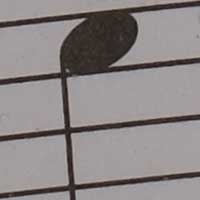 |
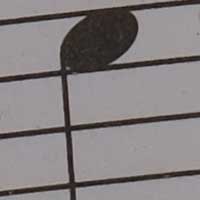 |
| RAW (85.5Mb) (100% Crop) | |
 |
Night
The Fujifilm X-T5’s maximum shutter speed is 30 seconds in the Time shutter speed mode, and there’s a Bulb mode which allows exposures up to 60 minutes long, which is excellent news if you’re seriously interested in night photography. The shot below was taken using a shutter speed of 15 seconds at ISO 125.

Pixel Shift Multi Shot
Pixel Shift is a special Multi-Shot function that can be used to create 160 megapixel images!
The camera’s built-in IBIS unit is used to shift the image sensor by up to a pixel in various directions during the sequence of 20 shots.
You then need to download the Pixel Shift Combiner software from Fujifilm.com, manually select the 20 files that make up each Pixel Shift shot, and the software will then automatically combine them into a single DNG file.
Multiple Exposure
The Fujifilm X-T5’s Multiple Exposure mode combines up to 9 different images together in-camera to create one composite image, with four different ways of combining them – Additive, Average, Bright, Dark.
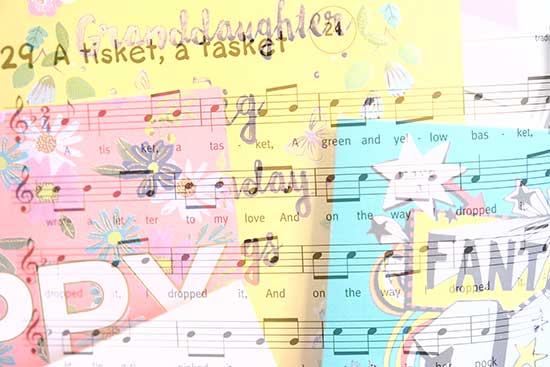
Dynamic Range
The Fujifilm X-T5 has three dynamic range settings – 100% (on by default), 200%, and 400% – and an Auto setting if you want to let the camera take control.
These settings gradually increase the amount of detail visible in the shadow and highlight areas, with the side-effect of more noise appearing in the image. Note that you can’t actually turn this feature off. All three settings are available from ISO 500 upwards.
HDR
The Fujifilm X-T5 has a High Dynamic Range mode with five different settings – AUTO, 200%, 400%, 800%, 800%+. The camera takes three shots with different exposures, changing the shutter speed for each one, and then combining them in-camera.
Film Simulations
The Fujifilm X-T5 offers 19 different film simulation modes to help replicate the look of your favourite film stock from the past.
Advanced Filters
The Fujifilm X-T5 offers 13 different creative filter effects which can be previewed on the LCD screen and/or in the EVF before taking a photo.
|
Toy Camera |
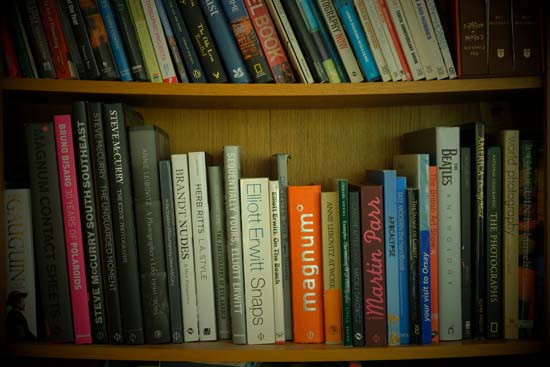 |
|
Miniature |
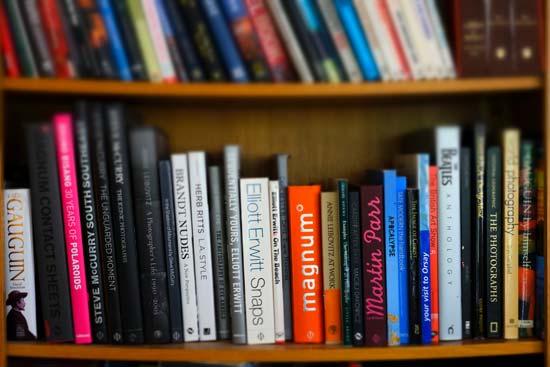 |
|
Pop Color |
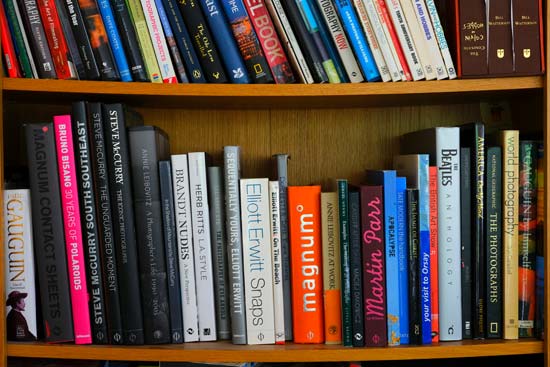 |
|
High-Key |
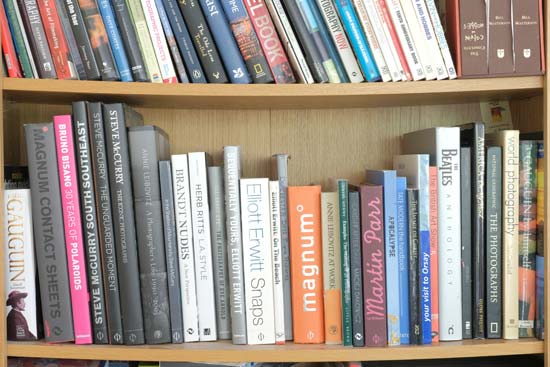 |
|
Low-Key |
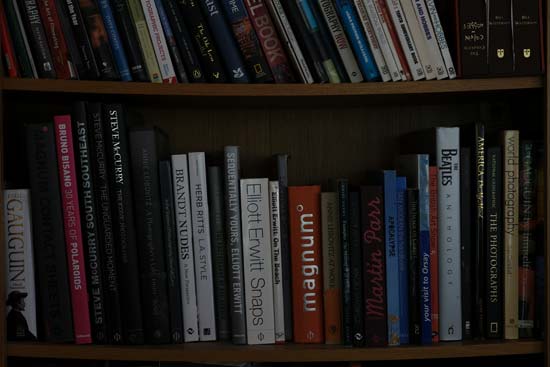 |
|
Dynamic Tone |
 |
|
Soft Focus |
 |
|
Partial Color (Red) |
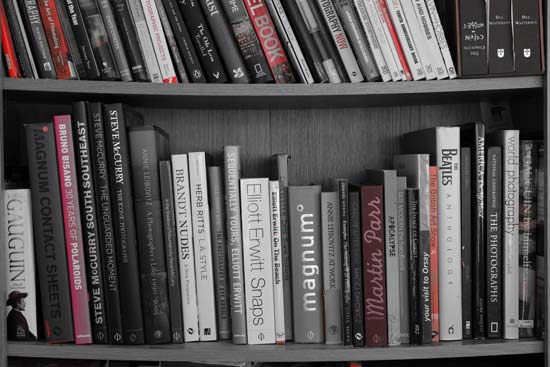 |
|
Partial Color (Orange) |
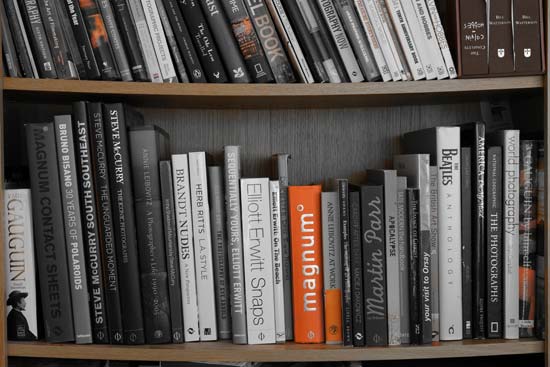 |
|
Partial Color (Yellow) |
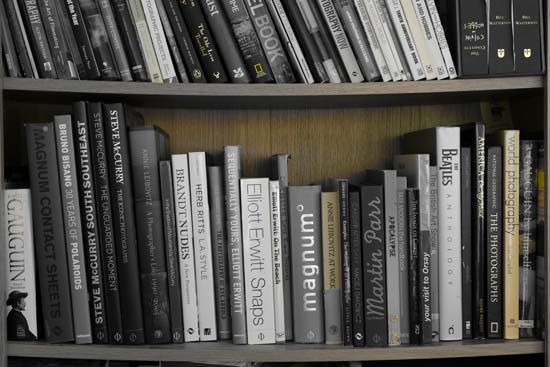 |
|
Partial Color (Green) |
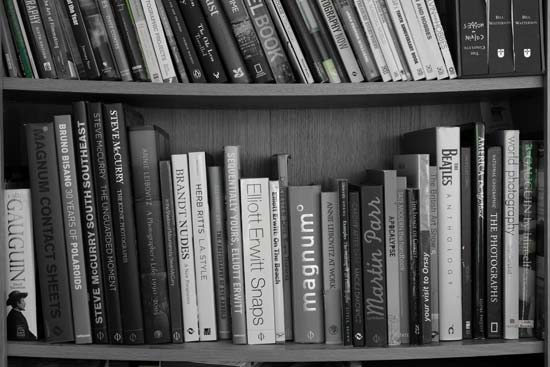 |
|
Partial Color (Blue) |
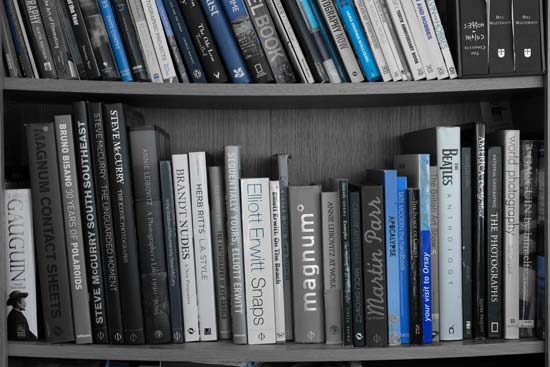 |
|
Partial Color (Purple) |
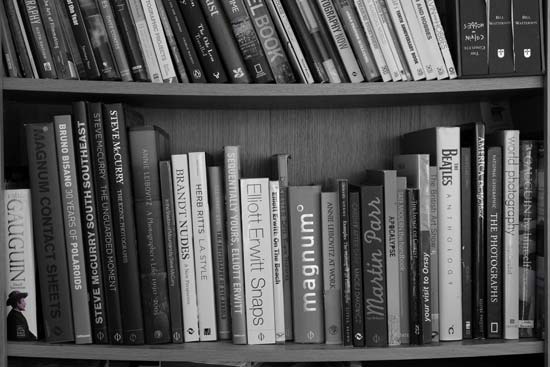 |
Sample Images
This is a selection of sample images from the Fujifilm X-T5 camera, which were all taken using the 40.2 megapixel Fine JPEG setting. The thumbnails below link to the full-sized versions, which have not been altered in any way.
Sample RAW Images
The Fujifilm X-T5 enables users to capture RAW and JPEG format files. We’ve provided some Fujifilm RAW (RAF) samples for you to download (thumbnail images shown below are not 100% representative).
Sample Movies & Video
This is a sample 6.2K movie at the quality setting of 6240×3150 pixels at 30 frames per second. Please note that this 15 second movie is 192Mb in size.
This is a sample 4K DCI HQ movie at the quality setting of 40960×2160 pixels at 30 frames per second. Please note that this 16 second movie is 204Mb in size.
This is a sample 4K DCI movie at the quality setting of 4096×2160 pixels at 30 frames per second. Please note that this 15 second movie is 192Mb in size.
This is a sample 4K HQ movie at the quality setting of 3840×2160 pixels at 30 frames per second. Please note that this 16 second movie is 204Mb in size.
This is a sample 4K movie at the quality setting of 3840×2160 pixels at 60 frames per second. Please note that this 16 second movie is 204Mb in size.
This is a sample 1080p Full HD movie at the quality setting of 1920×1080 pixels at 60 frames per second. Please note that this 15 second movie is 192Mb in size.
This is a sample Full HD 8x slow-motion movie at the quality setting of 1920×1080 pixels at 240 frames per second. Please note that this 120 second movie is 369Mb in size.
This is a sample Full HD 8x slow-motion movie at the quality setting of 1920×1080 pixels at 240 frames per second. Please note that this 88 second movie is 272Mb in size.
Product Images

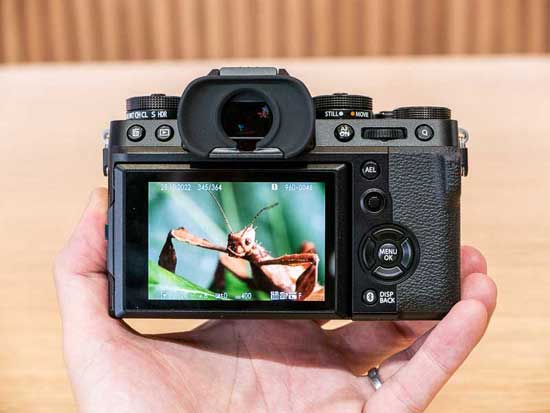
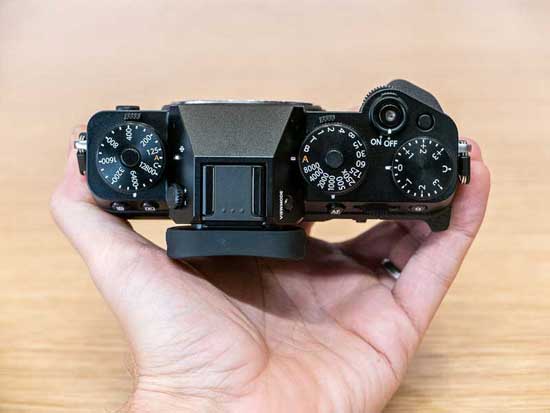
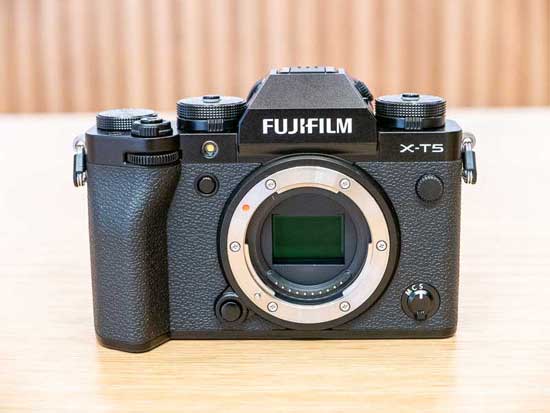
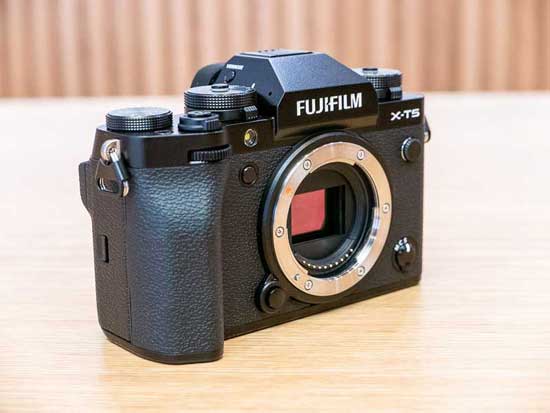

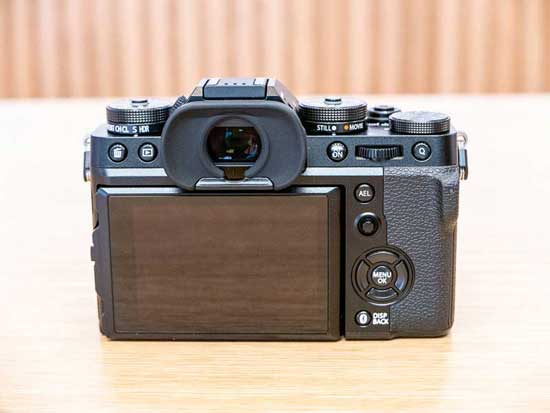
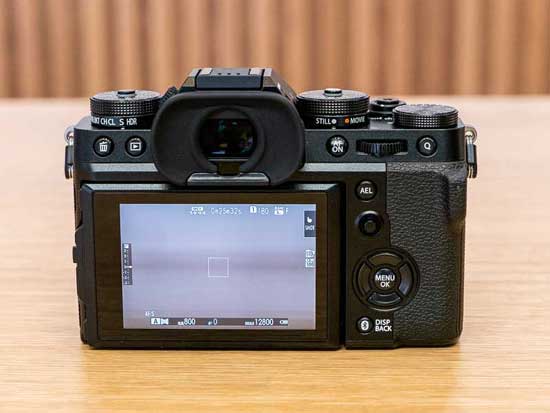
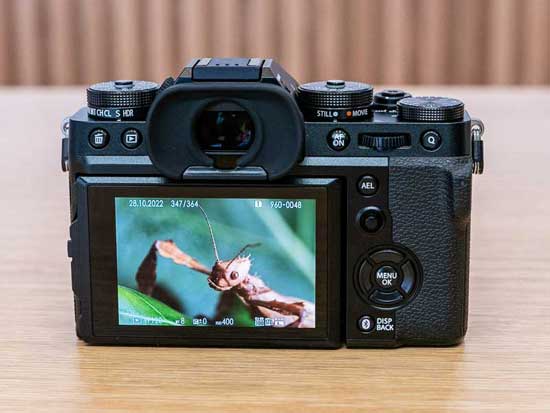
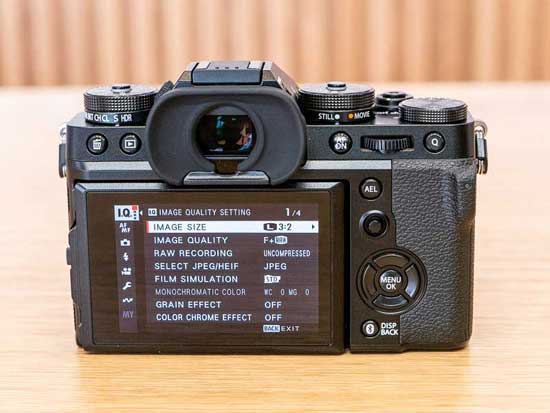

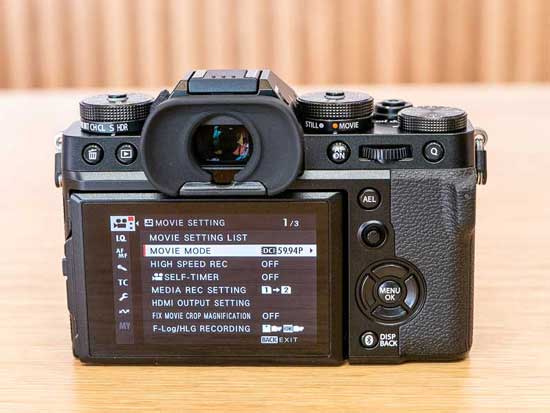
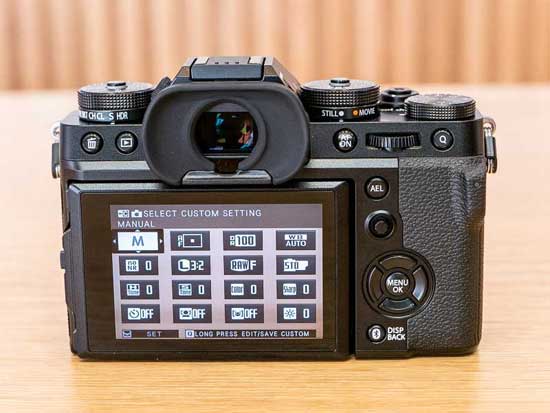
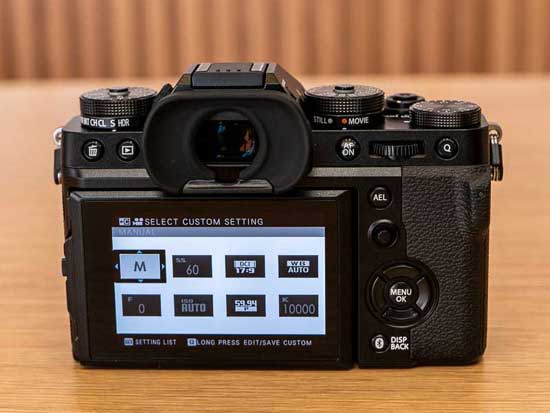
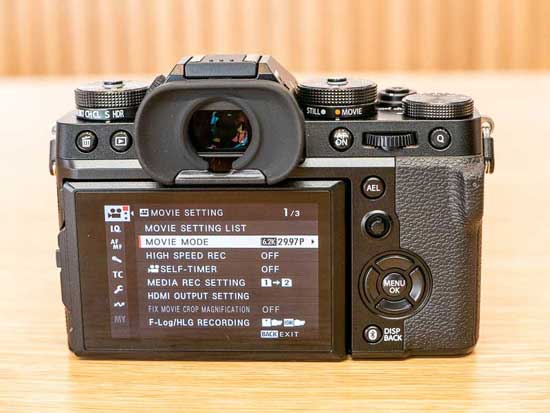
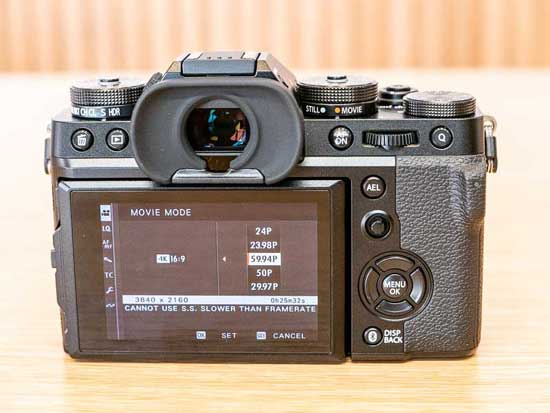

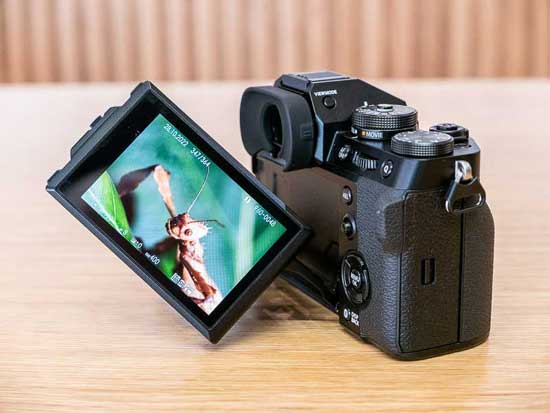
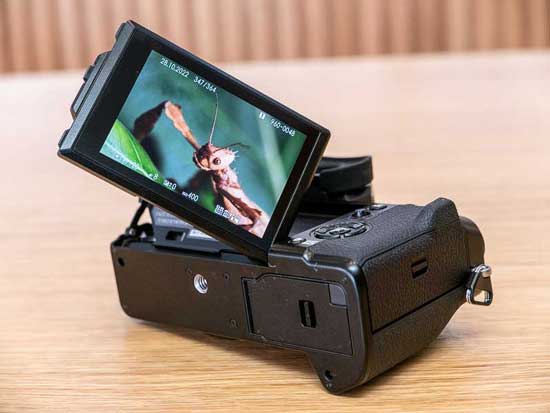
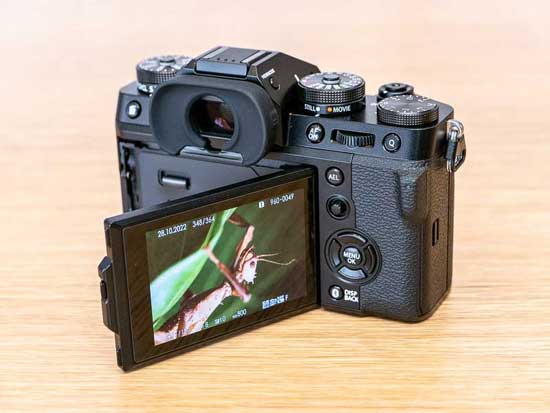


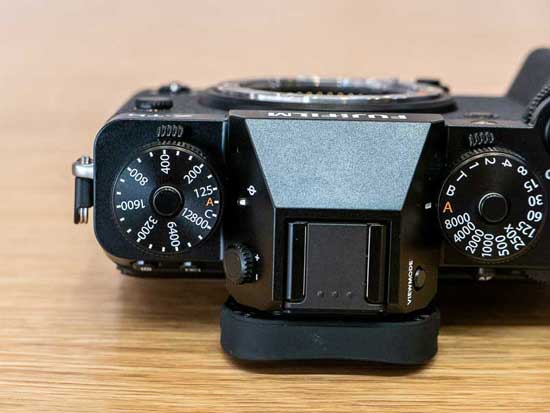


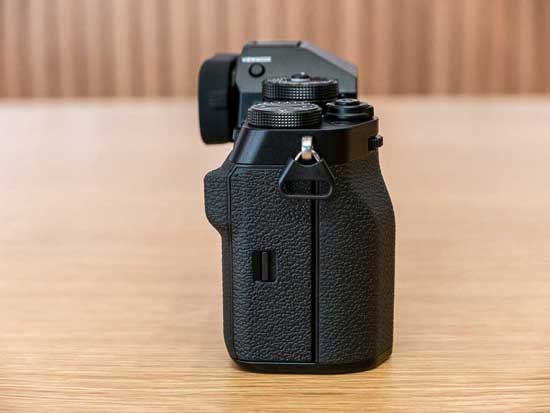


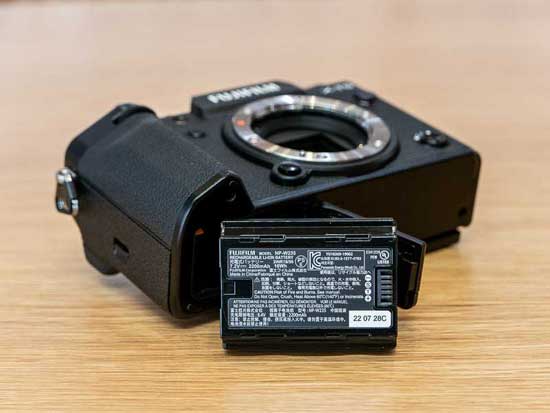
Conclusion
2022 has been a massive year for Fujifilm, with the launch of not one, not two, but three flagship APS-C cameras in the identical shapes of the X-H2 and X-H2S and now the brand new X-T5.
Whereas the former two models largely eschewed the traditional dials and controls that Fuji users have come to know and love, the XT5 marks a return to the familiar control-heavy approach that the XT-series has long been known for, including the now classic Fujifilm ISO, Shutter Speed and Exposure Compensation dials found on top of the camera.
In fact, the new Fujifilm X-T5 essentially retains the classic retro styling and control layout of its XT4 predecessor and combines it with the same 5th generation sensor and processor as used by the X-H2, thereby providing exactly the same stills image quality as its more expensive sibling.
Those would-be-buyers who were hoping for an XH2 in XT-series clothing will be mostly, but not entirely, satisfied with what the X-T5. What it notably doesn’t offer when compared to the XH2 is 8K video recording, which seems to purely be a marketing rather than technical decision on the part of Fujifilm.
Also in direct comparison the XT5 has a much smaller buffer, uses slower memory cards, has a lower-spec EVF, doesn’t have full size HDMI or 3.5mm headphone sockets, and doesn’t support an external cooling fan or a vertical grip, some or all of which may persuade you to forgo the XT5’s traditional controls in exchange for the undoubtedly better specification offered by the X-H2.
Compared to its predecessor, the XT4, which a lot of people may be looking to upgrade from, the new XT5 represents a big step forward in many ways for the XT-series, from the 40 megapixel resolution with 160mp pixel-shift mode to unlimited 4K/60p recording with no crop, and from the faster, AI-driven AF system that can recognise a lot more subjects to the improved EVF, even more capable IBIS and longer battery life.
The X-T4 was something of a speed demon when it was released in 2020, so much so that it actually still out-performs the new X-T5. Fujifilm have also gone back to a 3-way tilting LCD on the new X-T5, rather than the vari-angle screen on the X-T4, saying that it better matches the more stills-focused nature of the newer model. And again the lack of a vertical grip option for the newer model is definitely a brave marketing choice on the part of Fuji.
There’s only a relatively small price difference between them, with the new Fujifilm X-T5 is priced at £1699 / $1799 body-only in the UK and USA respectively and the similarly specced Fujifilm X-H2 costing £1899 / $1999 body only, making it just £$200 more than the XT5.
Overall, the Fujifilm X-T5 certainly succeeds in combining the much-loved design of its predecessors with the cutting-edge specification of the X-H2 at a more competitive price-point, and is therefore worthy of our coveted Essential award.
| Ratings (out of 5) | |
|---|---|
| Design | 5 |
| Features | 4.5 |
| Ease-of-use | 4.5 |
| Image quality | 5 |
| Value for money | 4.5 |
Main Rivals
Listed below are some of the rivals of the Fujifilm X-T5.
Canon is back in the APS-C game with the much-anticipated launch of the EOS R7, a very capable prosumer camera with a clear focus on speed. Billed as the mirrorless successor to the much loved EOS 7D Mark II DSLR, does the new R7 have what it takes to compete against the likes of Fujifilm and Sony? Find out now by reading our in-depth Canon R7 review…
After 4 long years of patiently waiting, the Fujifilm X-E4 has finally arrived. Boasting all of Fuji’s latest imaging tech wrapped up in a beautiful classic rangefinder design, could this small, lightweight and very affordable mirrorless camera be the right one for you? Find out now by reading our in-depth Fuji XE4 review, complete with full-size sample photos…
The X-H2 is the highest resolution APS-C camera that Fujifilm have ever released, offering a 40 megapixel BSI sensor that can record 8K/30p video and shoot burst sequences at 20fps. Find out exactly what this new flagship camera is capable of and who it’s aimed at by reading our complete Fuji XH2 review complete with full-size JPEG, Raw and video samples.
The X-H2S is the fastest, most capable APS-C sensor camera that Fujifilm have ever released, but it’s also by far the most expensive. Find out exactly what this new flagship camera is capable of and who it’s aimed at by reading our complete Fuji XH2S review complete with full-size JPEG, Raw and video samples.
The Fujifilm X-S10 mirrorless camera aims to bring the renowned X-series image quality and colour science to a wider audience by being smaller, easier to use and cheaper than the company’s flagship cameras. Does it strike the right balance between simplicity and accessibility? Find out now by reading our in-depth Fuji XS10 review…
The Fujifilm X-T4 is the successor to the very popular X-T3, which was released in 2018, principally adding in-body image stabilisation, greatly improved battery life, a quicker and quieter mechanical shutter, enhanced continuous AF and a number of design tweaks. Can the new X-T4 improve on what was already an outstanding camera? Find out now by reading our in-depth Fujifilm X-T4 review…
Nikon have introduced their second APS-C, cropped-sensor mirrorless camera with the launch of the Z fc. Almost identical to the Z50 model in terms of its key specifications, the new Z fc offers a much more retro, classic design. Read our in-depth Nikon Z fc review to find out if it’s the perfect blend of old and new…
The new OM-1 flagship is both the last ever Olympus camera and the first ever OM System camera. Confused? Well no need to worry, as we take an in-depth look at what this new Micro Four Thirds flagship has to offer in our OM System OM-1 review, complete with full-size sample photos and videos…
OM System have just updated their enthusiast model for 2022 with the launch of the new OM-5, but is it any good? Find out now by reading our review of the OM System OM5 mirrorless camera, complete with full-size sample photos and videos…
The much anticipated Panasonic GH6 is finally here! But what does this new flagship camera offer, and can it really improve on the best-selling GH5? We find out in our review of the Panasonic Lumix GH6 mirrorless camera, complete with sample photos, test shots, videos and more…
The A6600 is the new all-singing, all-dancing flagship camera in Sony’s extensive range of APS-C mirrorless cameras, but does it offer enough to out-gun both its main rivals and its cheaper siblings? Find out now by reading our in-depth Sony A6600 review, complete with full-size sample images and videos.
Sony are attempting to turn the camera world on its head by creating a new 35mm full-frame camera that’s the same size and weight as one with a smaller APS-C sensor. Have they succeeded with the new Sony A7C, and is it a great camera in its own right? Find out now by reading our Sony A7C review complete with full-size sample photos and videos.
Review Roundup
Reviews of the Fujifilm X-T5 from around the web.
Few cameras have captured photographers’ imaginations quite like Fujifilm’s premium X-T models. Ever since the original X-T1 appeared back in 2014, they’ve found favour due to their compact size, robust weather-sealed construction, and traditional analogue control dials. Latest in the range is the Fujifilm X-T5, which uses the same 40MP image sensor as the recent Fujifilm X-H2. But while that model was aimed at hybrid shooters equally interested in both stills and video, the X-T5 is focused primarily on the needs of stills photographers.
Read the full review »
Specifications
| Model name | FUJIFILM X-T5 | |
| Lens Mount | FUJIFILM X mount | |
| Image sensor | 23.5mm x 15.7mm (APS-C) X-Trans CMOS 5 HR with primary color filter | |
| Number of effective pixels | 40.2 millions pixels | |
| Sensor Cleaning System | Ultra Sonic Vibration | |
| Image Processing Engine | X-Processor 5 | |
| Storage media | SD Card (-2GB) / SDHC Card (-32GB) / SDXC Card (-2TB) / UHS-I / UHS-II / Video Speed Class V90 *Please check Compatibilityfor more detail. |
|
| File format of still image | DCF | Compliant with Design rule for Camera File system (DCF2.0) |
| JPEG | Exif Ver.2.32*1 | |
| HEIF | 4:2:2 10bit | |
| RAW | 14bit RAW (RAF original format) | |
| TIFF | 8bit / 16bit RGB (In-camera Raw Conversion Only) | |
| Number of recorded pixels | [L] | 〈4:3〉 6864 x 5152 〈3:2〉 7728 x 5152 〈16:9〉 7728 x 4344 〈1:1〉 5152 x 5152 〈5:4〉 6432×5152 |
| [M] | 〈4:3〉 4864 x 3648 〈3:2〉 5472 x 3648 〈16:9〉 5472 x 3080 〈1:1〉 3648 x 3648 〈5:4〉 4560×3648 | |
| [S] | 〈4:3〉 3456 x 2592 〈3:2〉 3888 x 2592 〈16:9〉 3888 x 2184 〈1:1〉 2592 x 2592 〈5:4〉 3264×2592 | |
| Panorama | [L] | 〈vertical〉 9600 x 2160 〈Horizontal〉 9600 x 1440 |
| [M] | 〈vertical〉 6400 x 2160 〈Horizontal〉 6400 x 1440 | |
| Digital Tele-Converter | 2.0x / 1.4x / OFF | |
| Sensitivity | Still Image | Standard Output: AUTO1 / AUTO2 / AUTO3 /ISO125 – 12800 (1/3 step) Extended Output: ISO64 / ISO80 / ISO100 / ISO25600 / ISO51200 |
| Movie | Standard Output: AUTO / ISO125 – 12800 (1/3 step) Extended Output: ISO25600 |
|
| Exposure control | TTL 256-zone metering / Multi / Spot / Average / Center Weighted | |
| Exposure mode | P (Program AE) / A (Aperture Priority AE) / S (Shutter Speed Priority AE) / M (Manual Exposure) | |
| Exposure compensation | Still | -5.0EV – +5.0EV 1/3EV step |
| Movie | -2.0EV – +2.0EV 1/3EV step | |
| Image stabilizer | Mechanism | Image sensor shift mechanism with 5-axis compensation |
| Compensation Effect | 7.0 stops *based on CIPA standard *Pitch/yaw shake only *With XF35mmF1.4 R lens mounted |
|
| Digital Image Stabilization | Yes (movie mode only) | |
| IS MODE BOOST | Yes (movie mode only) | |
| Shutter type | Focal Plane Shutter | |
| Shutter speed | Mechanical shutter | P mode: 30sec. to 1/8000sec. A mode: 30sec. to 1/8000sec. S/M mode: 15min. to 1/8000sec. Bulb: up to 60min. |
| Electronic shutter | P mode: 30sec. to 1/180000sec. A mode: 30sec. to 1/180000sec. S/M mode: 15min. to 1/180000sec. Bulb: 1sec. Fixed | |
| Electronic front curtain shutter | P mode: 30sec. to 1/8000sec. A mode: 30sec. to 1/8000sec. S/M mode: 15min. to 1/8000sec. Bulb: up to 60min. | |
| Mechanical + Electronic shutter | P mode: 30sec. to 1/180000sec. A mode: 30sec. to 1/180000sec. S/M mode: 15min. to 1/180000sec. Bulb: up to 60min. *Mechanical shutter works until 1/8000sec. |
|
| E-front + Mechanical shutter | P mode: 30sec. to 1/8000sec. A mode: 30sec. to 1/8000sec. S/M mode: 15min. to 1/8000sec. Bulb: up to 60min. *Electronic front curtain shutter works until 1/2000sec. |
|
| E-front + Mechanical + Electronic shutter | P mode: 30sec. to 1/180000sec. A mode: 30sec. to 1/180000sec. S/M mode: 15min. to 1/180000sec. Bulb: up to 60min. *Electronic front curtain shutter works until 1/2000sec, Mechanical shutter works until 1/8000sec. *The Electronic Shutter may not be suitable for fast-moving objects or handheld shooting. Flash can not be used. |
|
| Movie | 6.2K: 1/8000sec. to 1/24 sec. DCI4K/4K: 1/8000sec. to 1/4 sec. FHD: 1/8000sec. to 1/4 sec. *Cannot choose slower shutter speed than framerate for some settings. |
|
| Synchronized shutter speed for flash | Mechanical shutter: 1/250sec. or slower | |
| Continuous shooting | CH Electronic shutter Approx. 20fps (1.29x Crop) (JPEG 168 frames, Compressed RAW 72 frames, Lossless compressed RAW 41 frames, Uncompressed RAW 23 frames, Compressed RAW + JPEG 37 frames, Lossless compressed RAW + JPEG 31 frames, Uncompressed RAW + JPEG 23 frames) CH Electronic shutter Approx. 13fps (1.29x Crop) (JPEG 1000+ frames, Compressed RAW 104 frames, Lossless compressed RAW 53 frames, Uncompressed RAW 23 frames, Compressed RAW + JPEG 56 frames, Lossless compressed RAW + JPEG 44 frames, Uncompressed RAW + JPEG 23 frames) CH Electronic shutter Approx. 10fps (1.29x Crop) (JPEG 1000+ frames, Compressed RAW 1000+ frames, Lossless compressed RAW 70 frames, Uncompressed RAW 25 frames, Compressed RAW + JPEG 72 frames, Lossless compressed RAW + JPEG 53 frames, Uncompressed RAW + JPEG 23 frames) CH Electronic shutter Approx. 13fps (JPEG 163 frames, Compressed RAW 56 frames, Lossless compressed RAW 29 frames, Uncompressed RAW 22 frames, Compressed RAW+JPEG 32 frames, Lossless compressed RAW+JPEG 26 frames, Uncompressed RAW+JPEG 20 frames) CH Electronic shutter Approx. 8.9fps (JPEG 1000+ frames, Compressed RAW 94 frames, Lossless compressed RAW 40 frames, Uncompressed RAW 23 frames, Compressed RAW+JPEG 45 frames, Lossless compressed RAW+JPEG 30 frames, Uncompressed RAW+JPEG 22 frames) CH Mechanical shutter Approx. 15fps (JPEG 119 frames, Compressed RAW 39 frames, Lossless compressed RAW 22 frames, Uncompressed RAW 19 frames, Compressed RAW+JPEG 27 frames, Lossless compressed RAW+JPEG 21 frames, Uncompressed RAW+JPEG 19 frames) CH Mechanical shutter Approx. 10fps (JPEG 1000+ frames, Compressed RAW 56 frames, Lossless compressed RAW 29 frames, Uncompressed RAW 19 frames, Compressed RAW+JPEG 34 frames, Lossless compressed RAW+JPEG 25 frames, Uncompressed RAW+JPEG 19 frames) CH Mechanical shutter Approx. 7.0fps (JPEG 1000+ frames, Compressed RAW 1000+ frames, Lossless compressed RAW 33 frames, Uncompressed RAW 20 frames, Compressed RAW+JPEG 45 frames, Lossless compressed RAW+JPEG 22 frames, Uncompressed RAW+JPEG 20 frames) Pre-shot Electronic shutter Approx. 20fps (1.29x Crop) (While half press 20 frames, After full press 140 frames) Pre-shot Electronic shutter Approx. 13fps (1.29x Crop) (While half press 13 frames, After full press 300 frames) Pre-shot Electronic shutter Approx. 10fps (1.29x Crop) (While half press 10 frames, After full press 370 frames) Pre-shot Electronic shutter Approx. 13fps (While half press 13 frames, After full press 70 frames) *Recordable frames depends on recording media *Speed of continuous shooting depends on shooting environment and shooting frames |
|
| Drive Mode | AE Bracketing | 2 frames / 3 frames / 5 frames / 7 frames / 9 frames *by 1/3EV step, up to ±3EV steps |
| Filmsimulation bracketing | Any 3 types of film simulation selectable | |
| Dynamic Range Bracketing | 100% / 200% / 400% | |
| ISO sensitivity Bracketing | ±1/3EV / ±2/3EV / ±1EV | |
| White Balance Bracketing | ±1 / ±2 / ±3 | |
| Focus Bracketing | AUTO / MANUAL | |
| Multiple Exposure | Yes (Max. 9 frames) / Additive / Average / Bright / Dark | |
| HDR Mode | AUTO / 200% / 400% / 800% / 800% + | |
| Advanced filter | Toy camera / Miniature / Pop color / High-key / Low-key / Dynamic tone / Soft focus / Partial color (Red / Orange / Yellow / Green / Blue / Purple) | |
| Pixel Shift Multi Shot | Yes | |
| Focus | Mode | Single AF / Continuous AF / MF |
| Type | Intelligent Hybrid AF (TTL contrast AF / TTL phase detection AF) | |
| Low-light Performance | Contrast: -4.0EV XF50mmF1.0 attached Phase Detection: -7.0EV XF50mmF1.0 attached |
|
| AF frame selection | Single point AF: 13×9 / 25×17 (Changeable size of AF frame) Zone AF: 3×3 / 5×5 / 7×7 from 117 areas on 13×9 grid Wide/Tracking AF: Yes (AF-S: Wide / AF-C: Tracking) All: Yes |
|
| Face/eye detection | Yes | |
| Subject detection | Yes (Animal/Bird/Automobile/Motorcycle&Bike/Airplane/Train) | |
| Flash | EF-X8 | Guide Number: approx. 11 (ISO200・m) / approx. 8 (ISO100・m) Sync. Mode: 1st Curtain / 2nd Curtain Flash Mode: TTL (TTL AUTO / STANDARD / SLOW SYNC. ) / MANUAL / COMMANDER / OFF |
| Shoe mount flash | Sync. Mode: 1st Curtain / 2nd Curtain / AUTO FP (HSS) Flash Mode: TTL (TTL AUTO / STANDARD / SLOW SYNC. ) / MANUAL / MULTI *When EF-X500 is set / OFF |
|
| Synchronized terminal | Sync. Mode: 1st Curtain / 2nd Curtain Flash Mode: MANUAL |
|
| Hot shoe | Yes (Dedicated TTL Flash compatible) | |
| Viewfinder | EVF: 0.5 inch OLED Color Viewfinder, Approx. 3.69 million dots Coverage of Viewing Area vs. Capturing Area: Approx. 100% Eyepoint: Approx. 24mm (from the Rear End of the Camera’s Eyepiece) Diopter Adjustment: -5 – +3m-1 Magnification: 0.80x with 50mm Lens (35mm Equivalent) at infinity and Diopter set to -1.0m-1 Diagonal Angle of View: approx. 39° (Horizontal angle of view: approx. 32° ) Built-In Eye Sensor |
|
| LCD monitor | 3.0 inch Tilt-Type(Three Direction) Touch Screen Color LCD Monitor Aspect Ratio: 3:2 Dots: Approx. 1.84 million dots |
|
| Touch Screen Mode | Shooting Mode | Shooting, AF, Focus Area, OFF, Double Tap Setting (ON/OFF), Touch Function Setting (ON/OFF), Touch Zoom (ON/OFF), EVF Touch Screen Area Setting |
| Playback Mode | Swipe, Pinch-in / Pinch-out, Double-tap, Drag | |
| Movie recording | File format | MOV: HEVC/H.265, Linear PCM (Stereo sound 24bit / 48KHz sampling) MPEG-4 AVC/H.264, Linear PCM (Stereo sound 24bit / 48KHz sampling) MP4: MPEG-4 AVC/H.264, AAC |
| Movie compression | All Intra / Long GOP | |
| File size Frame rate Bitrate |
[6.2K(16:9)] 6240 x 3510 29.97p/25p/24p/23.98p 360Mbps/200Mbps/100Mbps/50Mbps [DCI4K HQ(17:9)] 4096 x 2160 29.97p/25p/24p/23.98p 360Mbps/200Mbps/100Mbps/50Mbps [4K HQ(16:9)] 3840 x 2160 29.97p/25p/24p/23.98p 360Mbps/200Mbps/100Mbps/50Mbps [DCI4K(17:9)] 4096 x 2160 59.94p/50p/29.97p/25p/24p/23.98p 360Mbps/200Mbps/100Mbps/50Mbps [4K(16:9)] 3840 x 2160 59.94p/50p/29.97p/25p/24p/23.98p 360Mbps/200Mbps/100Mbps/50Mbps [Full HD(17:9)] 2048 x 1080 59.94p/50p/29.97p/25p/24p/23.98p 360Mbps/200Mbps/100Mbps/50Mbps [Full HD(16:9)] 1920 x 1080 59.94p/50p/29.97p/25p/24p/23.98p 360Mbps/200Mbps/100Mbps/50Mbps [Full HD(17:9) High speed rec.] 2048 x 1080 240p/200p/120p/100p 360Mbps(recording)/200Mbps(recording) [Full HD(16:9) High speed rec.] 1920 x 1080 240p/200p/120p/100p 360Mbps(recording)/200Mbps(recording) *For recording movies, use a SD memory card with UHS Speed Class 3 or higher. *For recording movies in 360Mbps, use a SD memory card with Video Speed Class 60 or higher. *Selectable bitrate will be changed depends on the setting. *Recording time can become short depending on the temperature and/or shooting conditions |
|
| Film simulation mode | 19 modes (PROVIA/Standard, Velvia/Vivid, ASTIA/Soft, Classic Chrome, PRO Neg.Hi, PRO Neg.Std, Classic Neg., Nostalgic Neg., ETERNA/Cinema, ETERNA BLEACH BYPASS, ACROS, ACROS + Ye Filter, ACROS + R Filter, ACROS + G Filter, Black & White, Black & White + Ye Filter, Black & White + R Filter, Black & White + G Filter, Sepia) | |
| Monochromatic Color | Yes | |
| Grain Effect | Roughness | STRONG, WEAK, OFF |
| Size | LARGE, SMALL | |
| Color Chrome Effect | STRONG, WEAK, OFF | |
| Color chrome Blue | STRONG, WEAK, OFF | |
| Smooth Skin Effect | STRONG, WEAK, OFF | |
| Dynamic range setting | Still | AUTO / 100% / 200% / 400% ISO restriction: DR100%: No limit、DR200%: ISO250 or more、DR400%: ISO500 or more |
| Movie | 100% / 200% / 400% ISO restriction: DR100%: No limit、DR200%: ISO250 or more、DR400%: ISO500 or more |
|
| White balance | Auto | White Priority / Auto / Ambience Priority |
| Custom | Custom1 – 3 | |
| Color temperature selection | 2500K – 10000K | |
| Preset | Daylight / Shade / Fluorescent Light-1 / Fluorescent Light-2 / Fluorescent Light-3 / Incandescent Light / Underwater | |
| Clarity setting | ±5 steps | |
| Self-timer | Still | 10sec. / 2sec. |
| Movie | 10sec. / 5sec. / 3sec. | |
| Interval timer shooting | Yes (Setting : Interval, Number of shots, Starting time, Interval timer shooting exposure smoothing, Interval priority mode) | |
| Wireless transmitter | Standard | IEEE802.11a/b/g/n/ac (standard wireless protocol) |
| Encryption | WPA/WPA2 mixed mode, WPA3 | |
| Access mode | Infrastructure | |
| Bluetooth® | Standartd | Bluetooth Ver. 4.2 (Bluetooth low energy) |
| Operating frequency (Center frequency) | 2402 – 2480MHz | |
| Terminal | Digital interface | USB Type-C (USB3.2 Gen2x1) |
| HDMI output | HDMI Micro connector (Type D) | |
| Others | ø3.5mm, stereo mini connector (Microphone) ø2.5mm, Remote Release Connector Hot shoe Synchronized terminal |
|
| Power supply | NP-W235 Li-ion battery (included) | |
| Battery life for still images*2 | Economy Mode: Approx. 740 frames Normal Mode: Approx. 580 frames *When XF35mmF1.4 R is set |
|
| Actual battery life of movie capture*2 | 6.2K: Approx. 90min. (29.97p) 4K: Approx. 80min. (59.94p) Full HD: Approx. 90min. (59.94p), Approx. 100min. (120P) *Face detection is set to OFF |
|
| Continuance battery life of movie capture*2 | 6.2K: Approx. 130min. (29.97p) 4K: Approx. 130min. (59.94p) Full HD: Approx. 150min. (59.94p) *Face detection is set to OFF |
|
| Dimensions | Width: 129.5mm Height: 91mm Depth: 63.8mm (Minimum Depth: 37.9mm) |
|
| Weight | including battery and memory card: Approx. 557g excluding battery and memory card: Approx. 476g |
|
| Operation Environment | Operating Temperature | -10℃ – +40℃ |
| Operating Humidity | 10% – 80% (no condensation) | |
| Starting up period | Approx. 0.49sec. | |
| Accessories included | Li-ion battery NP-W235 AC power adapter AC-5VJ Plug adapter USB cable Headphone adapter Shoulder strap Body cap Hot shoe cover Sync terminal cover Owner’s manual |
|
- *1 Exif 2.32 is a digital camera file format that contains a variety of shooting information for optimal printing
- *2 Approximate number of frames or movie recording time that can be taken with a fully-charged based on CIPA Standard.
Movie Specification
Media Rec (SD memory card)
| Resolution/Aspect | Size | Frame rate | File format/Compression | Bit rate*1 | Bit depth | HDMI outupt Resolution(Frame rate)/Sampling/Bit depth |
Crop Magnification | ||
|---|---|---|---|---|---|---|---|---|---|
| DIS ON | DIS OFF | ||||||||
| 6.2K 16:9 | 6240 x 3510 | 29.97p 25.00p 24.00p 23.98p |
H.265 All-Intra 4:2:2 MOV H.265 All-Intra 4:2:0 MOV |
360Mbps | 10bit | FHD 4:2:2 10bit (When H.265 All-Intra 4:2:2 MOV selected)*2 4K 4:2:2 10bit (When H.265 All-Intra 4:2:0 MOV selected)*2 |
Not possible |
1.23x | |
| H.265 Long GOP 4:2:2 MOV H.265 Long GOP 4:2:0 MOV |
360Mbps 200Mbps 100Mbps 50Mbps |
FHD 4:2:2 10bit (When H.265 Long GOP 4:2:2 MOV selected)*2 4K 4:2:2 10bit (When H.265 Long GOP 4:2:0 MOV selected)*2 |
Not possible |
1.23x | |||||
| DCI4K HQ 17:9 4K HQ 16:9 |
4096 x 2160 3840 x 2160 |
29.97p 25.00p 24.00p 23.98p |
H.265 All-Intra 4:2:2 MOV H.265 All-Intra 4:2:0 MOV |
360Mbps | 10bit | DCI4K/4K 4:2:2 10bit | Not possible |
1.23x | |
| H.265 Long GOP 4:2:2 MOV H.265 Long GOP 4:2:0 MOV |
360Mbps 200Mbps 100Mbps 50Mbps |
Not possible |
1.23x | ||||||
| H.264 All-Intra 4:2:0 MOV | 360Mbps | 8bit | DCI4K/4K 4:2:2 8bit | Not possible |
1.23x | ||||
| H.264 Long GOP 4:2:0 MOV H.264 Long GOP 4:2:0 MP4 |
360Mbps 200Mbps 100Mbps 50Mbps |
Not possible |
1.23x | ||||||
| DCI4K 17:9 4K 16:9 |
4096 x 2160 3840 x 2160 |
59.94p 50.00p 29.97p 25.00p 24.00p 23.98p |
H.265 All-Intra 4:2:2 MOV H.265 All-Intra 4:2:0 MOV |
360Mbps | 10bit | DCI4K/4K 4:2:2 10bit | 1.1x | 59.94p/50.00p:1.14x 29.97p/25.00p/24.00p/23.98p:1.0x |
|
| H.265 Long GOP 4:2:2 MOV H.265 Long GOP 4:2:0 MOV |
360Mbps 200Mbps 100Mbps 50Mbps |
1.1x | 59.94p/50.00p:1.14x 29.97p/25.00p/24.00p/23.98p:1.0x |
||||||
| H.264 All-Intra 4:2:0 MOV | 360Mbps | 8bit | DCI4K/4K 4:2:2 8bit | 1.1x | 59.94p/50.00p:1.14x 29.97p/25.00p/24.00p/23.98p:1.0x |
||||
| H.264 Long GOP 4:2:0 MOV H.264 Long GOP 4:2:0 MP4 |
360Mbps 200Mbps 100Mbps 50Mbps |
1.1x | 59.94p/50.00p:1.14x 29.97p/25.00p/24.00p/23.98p:1.0x |
||||||
| FHD 17:9 FHD 16:9 |
2048 x 1080 1920 x 1080 |
59.94p 50.00p 29.97p 25.00p 24.00p 23.98p |
H.265 All-Intra 4:2:2 MOV H.265 All-Intra 4:2:0 MOV |
360Mbps | 10bit | FHD 4:2:2 10bit*3 | 1.1x | 59.94p/50.00p:1.14x 29.97p/25.00p/24.00p/23.98p:1.0x |
|
| H.265 Long GOP 4:2:2 MOV H.265 Long GOP 4:2:0 MOV |
360Mbps 200Mbps 100Mbps 50Mbps |
1.1x | 59.94p/50.00p:1.14x 29.97p/25.00p/24.00p/23.98p:1.0x |
||||||
| H.264 All-Intra 4:2:0 MOV | 360Mbps | 8bit | FHD 4:2:2 8bit*3 | 1.1x | 59.94p/50.00p:1.14x 29.97p/25.00p/24.00p/23.98p:1.0x |
||||
| H.264 Long GOP 4:2:0 MOV H.264 Long GOP 4:2:0 MP4 |
360Mbps 200Mbps 100Mbps 50Mbps |
1.1x | 59.94p/50.00p:1.14x 29.97p/25.00p/24.00p/23.98p:1.0x |
||||||
| High speed FHD 17:9 FHD 16:9 |
2048 x 1080 1920 x 1080 |
240fps(4×/8×/10×) 200fps(4×/8×) 120p (2x/4x/5x) 100p (2x/4x) |
H.265 All-Intra 4:2:2 MOV H.265 All-Intra 4:2:0 MOV |
360Mbps (when recording) | 10bit | FHD(59.94p) 4:2:2 10bit*4 | Not possible |
1.23x | |
| H.265 Long GOP 4:2:2 MOV H.265 Long GOP 4:2:0 MOV |
360Mbps (when recording) 200Mbps (when recording) |
||||||||
| H.264 All-Intra 4:2:0 MOV | 360Mbps (when recording) | 8bit | FHD(59.94p) 4:2:2 8bit*4 | ||||||
| H.264 Long GOP 4:2:0 MOV H.264 Long GOP 4:2:0 MP4 |
360Mbps (when recording) 200Mbps (when recording) |
||||||||
scroll
HDMI Output
| Resolution/Aspect | Size | Frame rate | HDMI outupt Resolution/Sampling/Bit depth |
Crop Magnification | |||
|---|---|---|---|---|---|---|---|
| DIS ON | DIS OFF | ||||||
| 6.2K 16:9 | 6240 x 3510 | 29.97p 25.00p 24.00p 23.98p |
FHD 4:2:2 10bit*2 | Not possible |
1.23x | ||
| DCI4K HQ 17:9 4K HQ 16:9 |
4096 x 2160 3840 x 2160 |
29.97p 25.00p 24.00p 23.98p |
DCI4K/4K 4:2:2 10bit | Not possible |
1.23x | ||
| DCI4K 17:9 4K 16:9 |
4096 x 2160 3840 x 2160 |
59.94p 50.00p 29.97p 25.00p 24.00p 23.98p |
DCI4K/4K 4:2:2 10bit | 1.1x | 59.94p/50.00p:1.14x 29.97p/25.00p/24.00p/23.98p:1.0x |
||
| FHD 17:9 FHD 16:9 |
2048 x 1080 1920 x 1080 |
59.94p 50.00p 29.97p 25.00p 24.00p 23.98p |
FHD 4:2:2 10bit *3 | 1.1x | 59.94p/50.00p:1.14x 29.97p/25.00p/24.00p/23.98p:1.0x |
||
HDMI Output (High speed REC HDMI ONLY)
| Resolution/Aspect | Size | Frame rate | HDMI outupt Resolution(Frame rate)/Sampling/Bit depth |
Crop Magnification | |||
|---|---|---|---|---|---|---|---|
| DIS ON | DIS OFF | ||||||
| FHD 16:9 | 1920 x 1080 | 120p 100p |
FHD(120p/100p) 4:2:2 10bit | Not possible |
1.23x | ||
HDMI RAW Output
| Resolution/Aspect | Size | Frame rate | Crop Magnification | ||
|---|---|---|---|---|---|
| DIS ON | DIS OFF | ||||
| 6.2K 16:9 | 6240 x 3512 | 29.97p 25.00p 24.00p 23.98p |
Not possible |
1.23x | |
- *1 Bit rate will be changed depend on the subject
- *2 The resolution from HDMI output is different from selected setting
- *3 When the aspect ratio is not 16:9, the image is output in 16:9 with a black band.
- *4 The frame rate from HDMI output is different from selected setting


